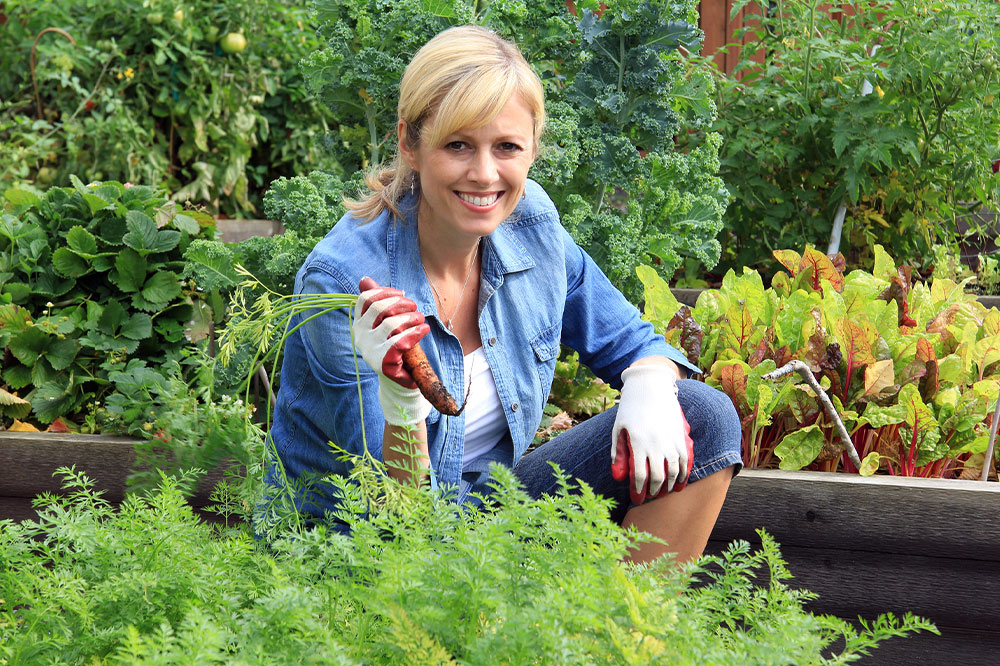
A beginner’s guide to gardening
Many pursue gardening as a hobby because it enriches their lives and provides a sense of well-being. Caring for and watching plants grow is fulfilling, whether you have a large garden or a small balcony. This post provides some essential gardening tips for beginners. It discusses the types of plants, how to take care of interior gardens, and what kinds of seeds and pots to buy, besides other helpful information.
The basics of gardening
There’s more to gardening than simply digging the ground and scattering seeds. It needs preparation, commitment, and expertise. Before you begin, take into account the following:
Sunlight
Determine how much direct sunlight your garden receives. Doing so will allow you to select the right plants.
Soil quality
The soil is the base of any productive garden. Ensure it drains effectively, is nutrient-rich, and is suitable for the plants you wish to grow.
Watering
Different plants require different amounts of hydration. Do not overwater or underwater.
Pest control
Look for environmentally friendly solutions to repel pests that could harm your plants.
Seasonal changes
Research the seasonal patterns in your location and select species that flourish in particular months.
Examining various plant species
Numerous types of plants are available to suit various tastes and growing conditions. Let’s examine some common varieties:
Blooming plants
Roses, tulips, daisies, and lilies are popular blooming plants that beautify your landscape.
Vegetables and herbs
Grow your own organic produce like lettuce, basil, mint, tomatoes, cucumbers, and other vegetables and herbs.
Foliage plants
Low-maintenance indoor plants like peace lilies, spider plants, and pothos purify the air of your living space.
Vines
Morning glories and grapevines are climbing plants that give your yard vertical appeal.
Creepers
Creepers like creeping fig and creeping thyme produce a thick carpet of foliage.
Citrus plants
Lemon, lime, and orange trees produce fruit and a crisp aroma that permeates the air.
Apple trees
Apple trees provide scrumptious fruits and a touch of elegance, making them ideal for bigger gardens.
Caring for indoor plants
If you don’t have an outdoor space, indoor plants are an excellent alternative. Here’s how to care for them:
Choose the best location
Place indoor plants next to windows with filtered sunlight or appropriate artificial light sources.
Water wisely
Indoor plants might suffer from overwatering. Let the soil dry up between waterings, then change the frequency according to the plant’s needs.
Pruning and trimming
Regularly prune branches and remove dead leaves to keep the plant in shape.
Fertilize occasionally
Fertilizing indoor plants on occasion ensures they receive vital nutrients for healthy growth.
How to buy seeds?
The first step to gardening is buying your preferred seedlings. Here are some tips to follow while shopping for seeds:
Buy quality seeds as they produce strong plants and have great germination rates.
Check the label to ensure the seeds are appropriate for your location’s environment.
Try several plant species in your garden to add variety and interest.
How to buy pots?
Here are some tips for buying pots that fit your plants and support them:
Select terracotta, ceramic, or plastic-based pots. Each has pros and cons regarding water retention.
Ensure the pots have holes for drainage to avoid soggy soil.
Select containers that allow growth and fit the plant’s root system.




